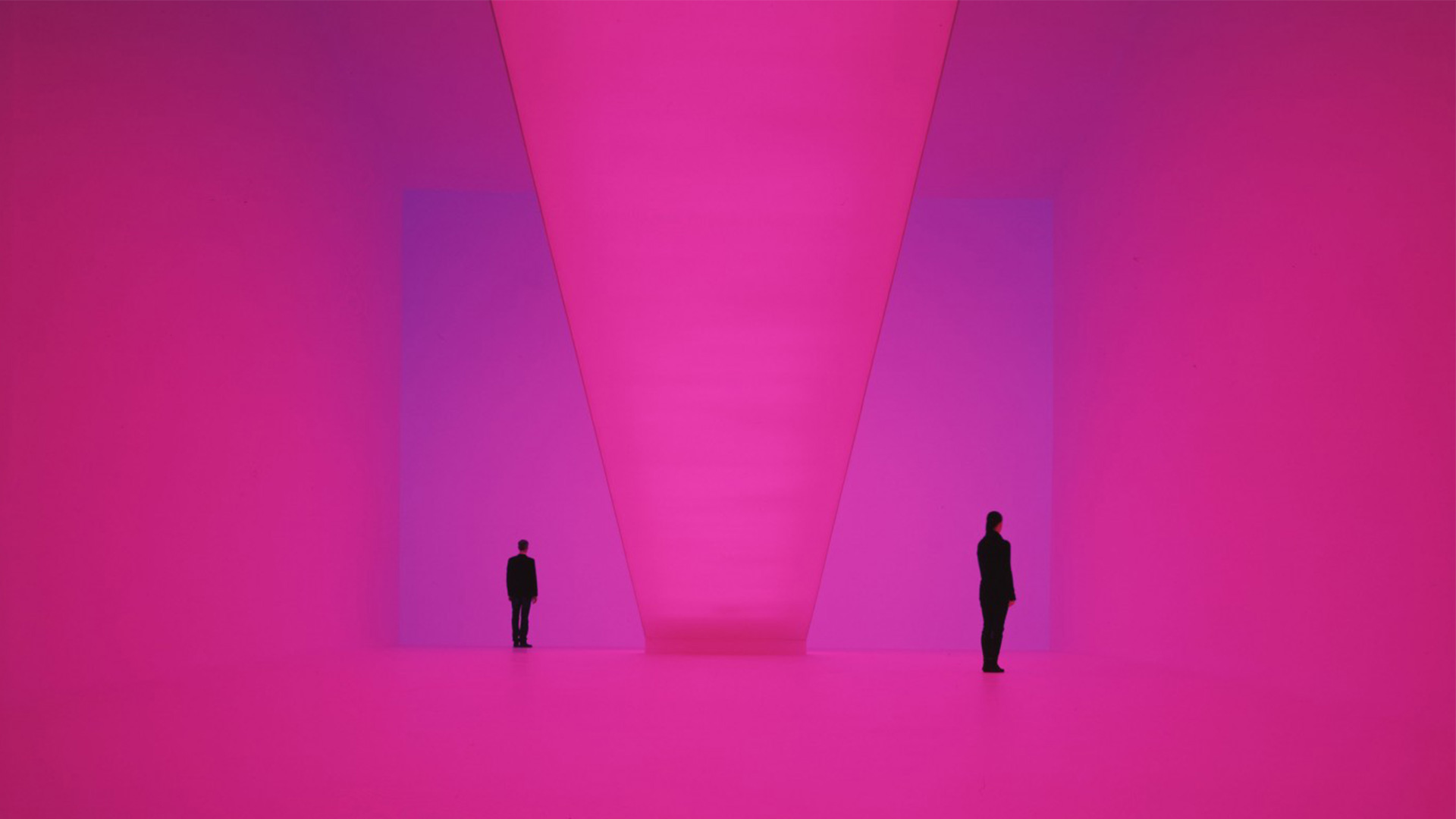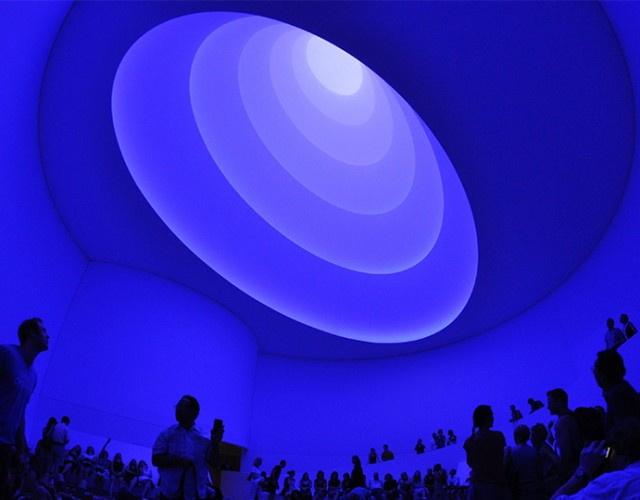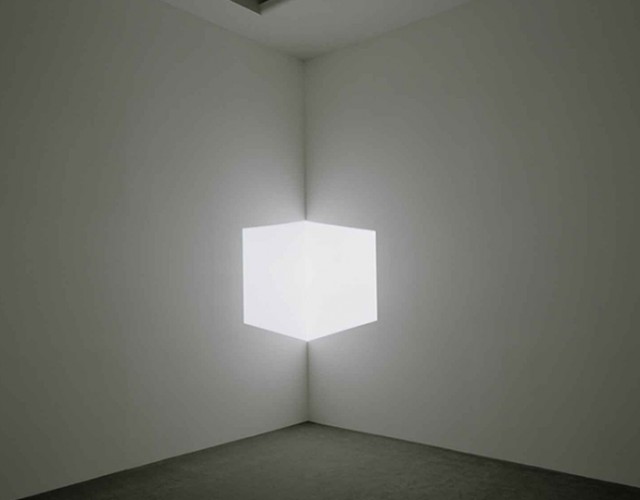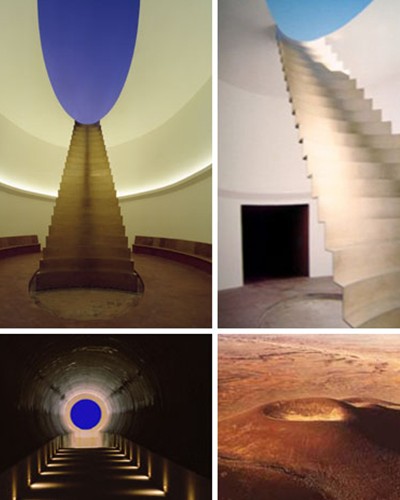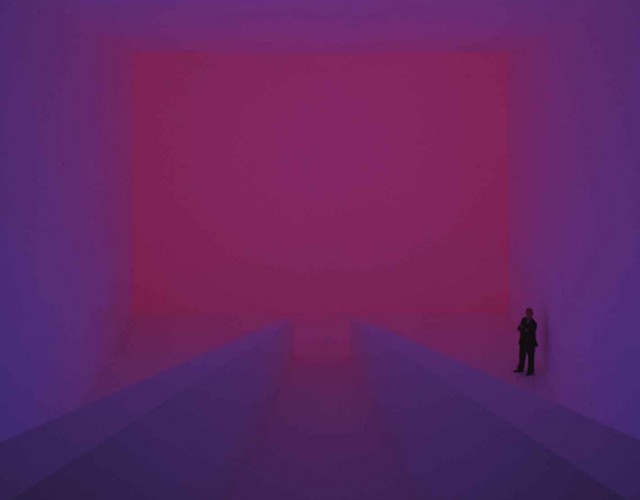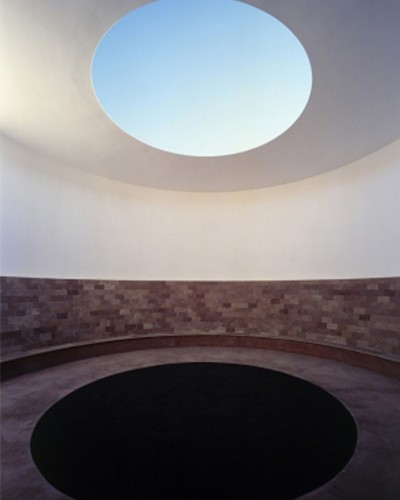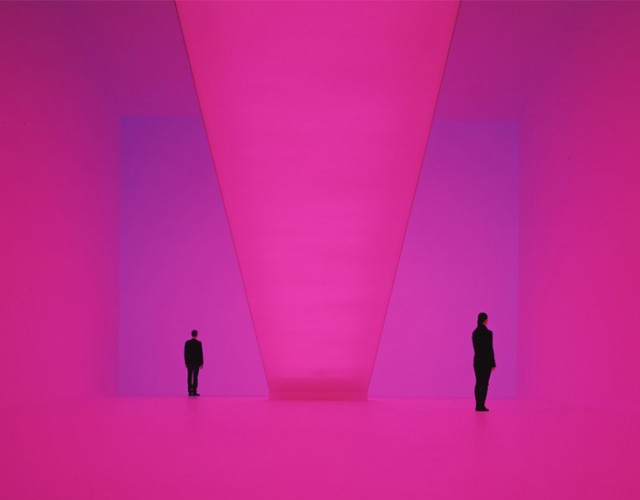The light magician
James Turrell, an American artist who works with the refractory medium of light, exploits how our mind processes images to reveal that at a fundamental level everything we see is an illusion. Turrell was once sued by a spectator who leaned on one of his works and fell into a void – “I have had reviews by people who thought I painted, somewhat unevenly, on the wall – they didn’t realise there was an entire space behind there, 18 feet deep. They didn’t look quite carefully enough.” (Turrell, 2006).
Born in 1943, he first came to prominence in the mid-1960s introducing art as an experience in perception rather than a tangible object and is one of a generation of West Coast artists associated with the ‘California Light and Space Movement’. Creating tricks using light as a medium to play on his audience’s sensibilities, he is a curator of carefully controlled experiments that are detectable by sight but not the other senses – “as a young man I had a bit of a chip on my shoulder and went directly to what I wanted to do, that was work that was not about light, but actually was light.” (Turrell, 2006).
References have been made on Turrell’s work as psychedelic (in which he responded that “it’s actually much better on drugs”) which is what makes his form of light art so ungraspable. On a basic level, he’s playing with the science of how we perceive the world, using his knowledge of our retinal structure and visual system to manipulate what we think we are “seeing”. Using his background in psychology and mathematics, he tests the boundaries between art and science, carefully exploring and manipulating the way people’s eyes and brains process light and space, a somewhat unusual combination in the world of art.
Experiments on how beams of light can transform depth perception and give the illusion of a three dimensional entity in a room culminated from Turrell’s pursuit of a master’s degree in art. The “thing-ness” of light is Turrell’s idea that light isn’t just a way to illuminate objects, but an object itself.
Roden Crater
Turrell is known not only for his light projections and installations but especially for his continued work (and patience!) for more than three decades on his Roden Crater project on an extinct volcano in the Arizona desert. Once completed, Roden Crater will be a naked eye observatory, one of the largest works of art in the history of humanity. Spectators will be able to observe the sun, moon and stars through a series of tunnels and chambers dug into the crater – yes, Turrell really did buy a volcano for this project, funded by someone else of course.
In one space, a visual phenomena takes place every 18.61 years. The moon shines down a certain tunnel and projects an eight-foot image on a marble monolith. It happened the first time in the Spring of 2006 – “I made it to be most accurate 2,000 years from now. If I make it absolutely accurate now, every day from now it gets less accurate, so I wanted it to come into accuracy then go back out.” (Turrell, 2006). That really is long-term thinking and an immense amount of accuracy.
LightScape
Apart from being a light artist, anyone who has seen his work will know, in truth he is something closer to a magician. Houghton Hall is his latest magic spectacle. The Nulty team will experience “the Turrell” magic next month when we take a trip to Norfolk where the Palladian mansion hosts an ambitious and important exhibition of James Turrell’s light pieces, many collected by the Marquess of Cholmondeley, owner of Houghton Hall and admirer of Turrell’s work. All the other pieces in the show are on loan from private collections and museums.
‘Obeying instructions to “hold on to the walls until your eyes adjust”, visitors are ushered into a totally lightless space. The minutes that pass in the dark are, in their own way, as important as the light at the end of them. It’s rare, these days, to experience total disorientation. Just when you have surrendered to blindness, a shapeless grey swims out of the dark; gradually, you glimpse patches of red. It takes 10 minutes to grasp that you are standing in front of a triptych of coloured light melting through a palette that spans mica-black to oyster-pink.’ (Abstract from the Financial Times on Turrell’s Exhibition, 2015).
Despite Turrell’s physical absence, he manages to “snap his fingers”, releasing the hazed and hypnotised to reveal that the “experience” they’ve just had of gazing into some sublime vastness was nothing more than an illusion. Houghton Hall is simply that – an invitation to contemplate that fact and challenge our senses to a psychedelic level. Cholmondeley believes Turrell’s exhibition will mark a turning point – “People will come to see James’s work and then they will come back for the historic collection. This show will be a game-changer for us”.
Turrell’s Lightscape at Houghton will be exhibited until the 24th October 2015 and if you are as captivated about light art as we are here at Nulty, we’re sure you’ll love it!
LIGHTSCAPE: JAMES TURRELL AT HOUGHTON
JAMES TURRELL: It’s about perception. For me, it’s using light as a material to influence or affect the medium of perception. I feel that I want to use light as this wonderful and magic elixir that we drink as Vitamin D through the skin—and I mean, we are literally light-eaters—to then affect the way that we see. We live within this reality we create, and we’re quite unaware of how we create the reality. So the work is often a general koan into how we go about forming this world in which we live, in particular with seeing.
Blog post by Caroline Jonsson
Images James Turrell


